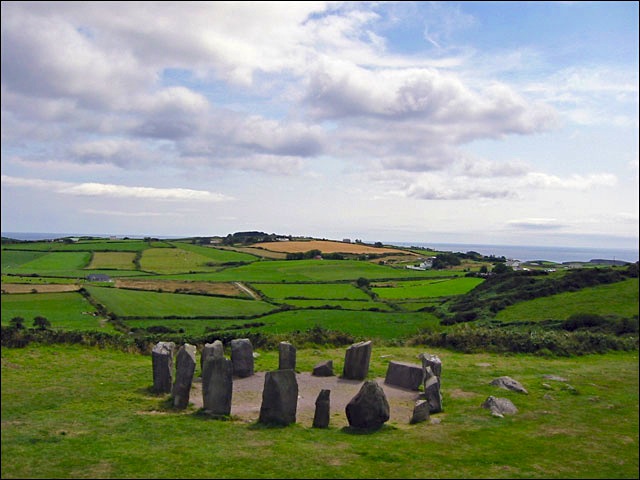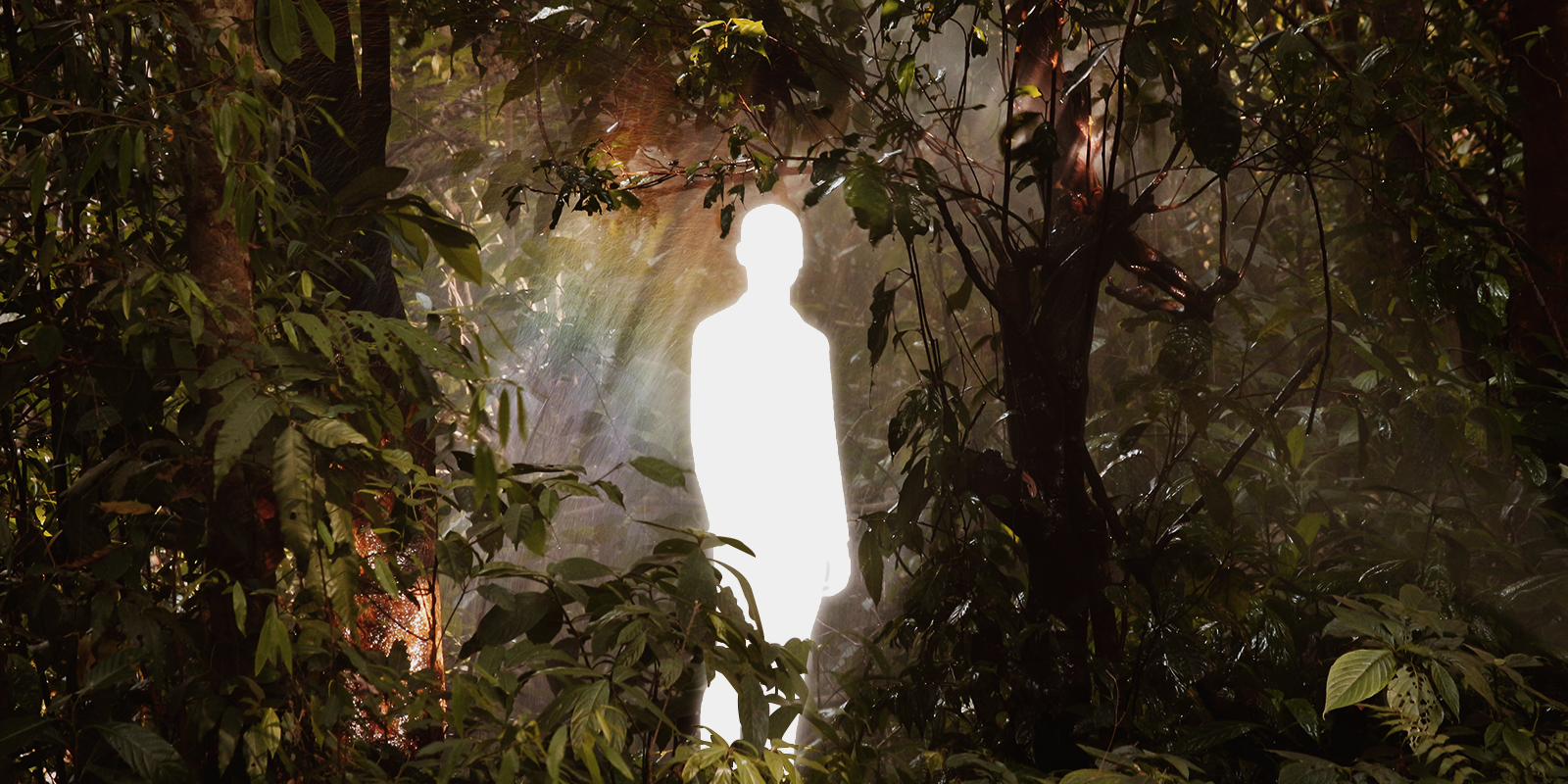
Paul McDonald: My PhD dissertation (1996) was revised and partly rewritten to become my first book, Descartes and Husserl (2000): even at the very start of my research career I alternated between analyses of an early 17th C. and an early 20th C. philosopher; the cross-fertilization and cross-illumination between the two thinkers’ main concerns was remarkable. When I was offered the chance to devise and teach a new course in Theory of Mind devoted to the history of these theories I wanted to provide a background text for students, but there wasn’t one. At this point my mentor and former supervisor at Durham, Prof. David E. Cooper said, “Well, there you go! You write it.” That research took three years and resulted in History of the Concept of Mind: Speculations about Mind, Soul and Spirit from Homer to Hume (2003).
Is there a book of important and inspiring quotations hidden in Nature Loves to Hide? Because you provide a treasury of quotes worthy of meditation.
If only there had been such a book! No, I had to read literally hundreds of books and articles on individual thinkers, usually by devouring most (if not all) the primary sources, less often by making use of expert secondary sources. On many occasions, these sources were themselves in obscure, out-of-the-way academic journals or in foreign languages. There are several very good, well-informed surveys of esoteric ideas, as well as compendia or anthologies devoted to Esoterica or Alchemy or Magic, but, of course, my book is not a history of esoteric theories, but an alternative history of philosophy, and there is nothing like an anthology of texts from these thinkers.
In choosing the main characters of your survey of the alternative stream of philosophy you provide some of the best introductions I’ve read to the work of people like Ficino, Agrippa, Paracelsus, Böhme, Fludd but also Fernando Pessoa and Phillip K. Dick. Obviously to keep each section within length limitations you had to focus on key issues. What guided you in choosing who to present, and how to distill their work?
Some of the thinkers you mention (and others) have had very good introductions written by scholars who specialize in them; usually in those cases I made skilful use of these secondary sources. However, quite a few of the characters I bring into the story, e.g. Rabelais, Coleridge, E. A. Poe, de Quincey, Pessoa, Bloch, and P. K. Dick, have never (or rarely) been considered as philosophers or as having a distinctively philosophical orientation. It was an extra task, a challenging one, to show how each of these figures thematised and carried forward some of the alternative themes identified in the first chapter and then synopsized in the last chapter. My choice of who to include was based on several convergent factors: did so-and-so explicitly discuss (in at least one work) some of these alternative themes; were they routinely relegated to the side-lines or even ignored in standard histories; was their use of overtly esoteric doctrines or disciplines (Alchemy-Magic-Kabbalah) tangential or incidental to other over-riding philosophical principles? Even when the answers to these (and subsidiary) questions was “yes” there definitely was still a residue of personal preference: Pessoa, Bloch and Dick deserve much more attention.
You write “to adumbrate such an alternative history is not an endorsement of any kind of perennial philosophy or pristine wisdom tradition.” Would it be fair to say, however, that you are revealing how deeply influential this alternative stream has been?
First, it’s important to distinguish between perennial philosophy and pristine wisdom, a distinction emphasized by several contemporary scholars. Those who advocate perennial philosophy hold that there is one original, ancient form of wisdom which appears again and again in every age, though dressed up under different guises. The historian Charles Schmitt said that this perennial idea “puts emphasis on the continuity of valid knowledge through all periods of history. It does not believe that knowledge has ever been lost for centuries, but believes that it can surely be found in each period, albeit sometimes in attenuated form.” The tradition of pristine wisdom (or philosophy) also holds that there is one original, ancient form of wisdom but that it has been hidden from public view, lost and buried or kept secret for various reasons; the seekers’ quest is to find this cache of knowledge, decode it if necessary, and then share it with one’s fellows. The standard history of philosophy began with and developed questions about the relation between how things appear to us and how they really are; then the question how it is that the real world came to be the way it appears, who or what made it that way; and then further, how it is that we can know about the way things really are. In contrast, an alternative history of philosophy has always been more concerned with questions about the nature and powers of the human soul, how to train and discipline this inner power, how to manipulate ‘secret’ words and objects to assist in this quest, and methods to achieve higher stages of knowledge in order for the soul to return to its source. Alt-thinkers’ metaphysics made constant reference to the hidden correspondences between the great world and the small world, the visible and the invisible, an inner nature and its “signature”; their theory of language is one centred on decoding these sacred signs; their theory of mind is one centred on training the human soul to ascend to higher states.
You discuss Augustine’s redefinition of the ancient Greek and Hermetic daemon to demon, the more familiar term today, with its much more negative connotation. Was this a propaganda coup, in your estimation, or a refinement of terms?
The ancient Greek idea of daimon was common in the Fifth C. BC and was referred to many times by Plato and other writers: it denoted an intermediate entity, halfway between humans and the gods, with great though limited power and knowledge, neither good not evil; as supernatural beings they could be invoked by spells and rituals performed by magicians (not priests). Later Neoplatonists, Gnostics, and theurgists expanded the character and scope of these beings, bringing them into their explanation of the cosmic hierarchy and the composition of the human body-soul union. Early Christian writers could not and did not countenance any supernatural entities or forces with their own domain, aside from God the Creator. However, the New Testament committed these theologians to the existence of beneficent angels and maleficent demons, splitting the ancient idea of daimon in two. Christian theurgists believed that genuine “well-shaped” prayers could intercede with angels, and magicians were thought to accomplish super-natural effects through the intervention of evil demons; and since demons were evil in their nature, magicians were themselves malevolent. One could say that this redefinition invested priests with the authority to praise the former actions and condemn the latter, thus diminishing the individual practitioner’s agency. But this only just scratches the surface of the long complex history of daimons and demons in the thousand years from the early medieval to the early modern period.
You describe the antipathy toward Carl Jung among many of today’s scholars of the history of alchemy in academia. Could you share an insight that Jung had in this area that is an example of why he deserves greater respect?
It’s important to point out that my use of Jung’s analyses of Zosimus’ visions in the chapter on the Graeco-Egyptian Origins of Alchemy does not mean that I subscribe to or advocate Jung’s own “depth” psychology, with its collective unconscious, universal archetypes, process of individuation, and so forth. Rather, it’s his historical investigations that I consider important and worth attending to. Jung was a very careful and erudite reader of complex, little-studied medieval texts; his meticulous unpacking of and commentary on Zosimus’ visions, for example, are highly illuminating in their own right, irrespective of his theoretical interpretation. He contributed significant early analyses of the following, amongst others: the 15th C. treatise Aurora Consurgens, attributed to Thomas Aquinas, the 16th C. Rosarium Philosophorum, the 16th C. Codex Vossianus, the medieval Chinese Secret of the Golden Flower (earliest text, 17th C.), and the vast collection of texts in his last great work Mysterium Coniunctionis. Jung compiled an important lexicon of alchemical technical terms, as well as an extensive examination of the Paracelsian-inspired medical chemistry of Gerhard Dorn (also 16th C.). His alchemical discoveries were first presented to the public during the 1935 Eranos Conference in Switzerland.
You perform a service in this book by providing translations from the neglected works of alchemist Stephanos of Alexandria. How do we explain his relative obscurity?
Stephanos of Alexandria was a scholar in Constantinople in the early 7th century; he wrote commentaries on Plato, Aristotle, mathematics, astronomy, and music. Due to the unusual scarcity of his works in English, my chapter 3 provides extensive extracts from the only English translation, published eighty years ago. The British scholar F. S. Taylor published full translations with extensive commentary of Stephanos’ treatise on the Art of Making Gold in the first volume of the journal Ambix (1937). The skimpy five pages of text in Stanton Linden’s Alchemy Reader (2003) are reprints of extracts from Taylor’s translation, shorn of any commentary, and without any further explanation. It’s possible that Stephanos has been overlooked in the various histories of alchemy because of confusion over his identity, authorship and originality; another alchemist-astrologer also named Stephanos confuses the whole picture. His works were not included in the ground-breaking collection by Berthelot and Ruelle (1888), who dismissed the author as derivative and unoriginal. One scholar was dubious about Stephanos’ alchemical reputation, and interpreted it as “the posthumous medieval afterglow of his Late Antique stardom, the brilliance of which became tarnished already during his lifetime.” But Paul Magdalino remarks that his treatise shows “wide rhetorical prowess, extensive learning, and a significant breadth of philosophical understanding.” In addition to Wanda Wolska-Conus’ several substantive treatises, Stephanos’ works have been championed by the Byzantine scholar Maria Papathanassiou in many academic articles. Stephanos deserves to better represented today by translators and historians of alchemy.
Your section on Hermes in Arabian history is an excellent introduction to a subject too long neglected in the West. Do you find any salient difference between the European and Arabian Hermetic traditions?
The principal differences between Greek (and later Latin) Hermeticism and Arabic Hermeticism were that the latter incorporated Hermes’ doctrines with Koranic doctrines, assimilating Hermes with the prophet Idrīs, and integrated some of these ideas with the Ismā’īlī version of Islam. Kevin van Bladel, author of The Arabic Hermes, said that the Arabic myth of Hermes as an ancient teacher and a prophet of science resulted from the combination of the legends of the Biblical Enoch, the role of Hermes as teacher of astrological sciences, the teaching of the early Ismā’īlī mission about Hermes, and the wisdom literature ascribed to Hermes. The Biblical figure of Enoch, taken away by Jehovah to heaven, was identified with the Quranic prophet Idrīs whom “God raised to a high place”; in claiming this, Hermes became the subject of stories similar to the heavenly ascent stories of Enoch. Further, “the early Ismā’īlīs seem to be the first organized group with an official doctrine about Hermes. This group maintained that their leader was the hidden Imām, who would return one day and initiate all Muslims into a higher, better realm, through salvific grades of understanding.” They insisted that “the principles of philosophy and the sciences are part of divine revelation, and that human reason can tinker with these revelations but never really surpass them. In both cases Hermes is their special example of a prophet of science.” Islamic (and Persian) scholars also contributed important Hermetic-inspired texts to this tradition, texts unknown in the Latin West: the 10th C. treatise The Book of the Apple, the 13th C. The Rebuke of the Soul (long ignored, but discussed at length in my chapter 5), and Suhrawardī’s Philosophy of Illumination which revived the ancient tradition of Persian wisdom.
You report that astrology was once considered an appropriate activity to occupy the minds of monks with evidence of divine harmony. And, of course, Christian alchemists were not uncommon. What caused the eventual rejection of these practices by the authorities?
This is a very complex situation which evolved at different paces in different cultures and involved many disparate factors. (1) In the 17th C. the concept of dynamic reality was superseded by a mechanical model of matter in motion; on this view nature is not shaped by divine intelligence, nor is it shapeable by human intelligence, it is insensate and dumb. (2) The magical doctrine of innate ideas, allied in many ways with rationalist metaphysics, was confronted by the empiricists’ attack on such ideas; everything one can claim to know is learned from experience. (3) This is connected with the empiricists’ view of language; its rules are conventional, its components arbitrary, and its acquisition is by imitation; there is no primal language, no pristine wisdom hidden in a special code, and the very idea of magical words of power is bankrupt. (4) The empiricist view of knowledge is coupled with the materialist view of the human mind; it is not a separate entity, not immortal, and hence there is no chance of the soul’s ascent. (5) The mechanization of the world picture shatters the microcosm-macrocosm connection; the small world of humans is not a replica of the great world; the many levels of similitude and correspondence are broken, and this is disastrous for the astrological assumption that the stars influence individual human natures and destinies.
You discuss the influence of alchemy and Plotinus on Berkeley, the influence of Swedenborg on Kant, and the influence of The Chemical Wedding and Vaughan’s Anthroposophy on Goethe. What made this alternative current, long neglected, nevertheless a powerful artistic and cultural catalyst?
One of the most basic presuppositions of the alternative view is that reality is dynamic, the cosmos is an animate organism, guided by divine intelligence, a spark of which humans participate in. This is in stark contrast with view that reality consists of material bodies in motion, under the sway of mechanical laws. Further, Hermetic-alchemical thinking is deeply, inextricably visual, lending itself to many types of illustration, in charts, diagrams, talismans, etc.; intense visual imagery is tied up with their espousal of the creative imagination, something which, of course, appeals to writers, artist and creatives. Between the physical and intelligible is the imaginal domain which can be accessed in night-dreams, daylight-visions, hypnagogic states; it is an altered mentality cultivated by artists and writers and seers.
You point out that Hegel’s library included Agrippa, Böhme, Bruno, and Paracelsus, and that “Hegel aligned himself, informally, with Hermetic societies such as the Freemasons and the Rosicrucians.” You describe his classic The Phenomenology of Spirit as “Hegel’s initiatory experience. It is Hegel’s Eleusis, it is his Bacchanalian revel.” And you remind us “Eric Voegelin claims that Hegel’s thought belongs to the continuous history of modern Hermeticism, and refers to the Phenomenology of Spirit as “a grimoire.” How did Hegel escape the dismissal other Hermetic authors suffered?
Despite the strong presence of Hermetic ideas in some of Hegel’s works, his speculations exploded into areas rarely considered by Hermeticists before: ontology, ethics, politics, aesthetics, and history. Hegel remains important and relevant to contemporary concerns for several reasons: his concept of Geist (usually translated as Spirit) refers to a complex system of mutually interlinked agents, a virtual organism or living entity, which moved through various stages on its progress towards realization. He thought that he had gone beyond the traditional opposition of subject and object to a fully integrated aggregate of agents, with their history, culture and values. In doing so he brought into consideration, for philosophical and psychological purposes, distinct patterns of social interaction and reciprocal recognition. Hegel is the last great system-builder whose principles encompass every aspect of philosophical theory. His fundamental model of the dialectical structure of Reason means that there is constant movement in the appearance of thesis-antithesis-synthesis: something holds in place, brings about its own negation, and then yields a resolution of the conflicted states. Many features of Hegel’s thought had a profound influence on subsequent philosophers: Marx’s political economy, the late Sartre’s dialectical reason, French post-modernism, as well as Kierkegaard and Nietzsche – though the latter are mainly dismissive and sarcastic. Hegel bequeathed to all these thinkers (and others) the central concept of human alienation: people often feel discontent with their circumstances, as well as within themsleves, divorced from their own basic desires and labour, and this can lead to over-turning, trying to replace that-which-is in order to create a new solution. His concept of ethics rejects absolute principles, timeless moral codes, in favour of a social consensus appropriate to a given society’s historical development. There are several notions more-or-less invented by Hegel which became key themes for the Existentialists: alienation, authenticity, historicity, the master-slave relation, and the collective struggle for a better community. An insightful article on some of Hegel’s lasting ideas, by Chris Christensen, was published in Philosophy Now magazine in Issue 129 (Dec. 2018-Jan. 2019) – it’s highly recommended.
On the one hand, the New Age movement popularized and repackaged much of this historical stream but no progress was made toward advancing the ideas. On the other hand, in literature and the arts great minds found new approaches and nuances, furthering the stream in significant ways. Would it be accurate to say that, on your view, the progression of the Neoplatonic-Gnostic-Hermetic alternative stream split in the 20th Century? Also does Crowley, for example, mark this split, or was it already happening in organizations like the Golden Dawn?
The 19th century traditions or movements of theosophy, ritual magic, secret societies, and so forth does not reappear in nor show any development in the 20th century in the form of New Age Beliefs. In other words, the principal philosophical themes spelled out in the first chapter and synopsized in the last, become separated from various embellishments, paraphernalia, and accoutrements with which some of these themes were associated. These accoutrements become the very stuff around which New Age ideas coagulate and propagate in the last hundred years; in contrast, alternative philosophical approaches are taken up by novelists and other creative artists. The former group are better called New Religious Movements; they fall under various ideologies, such as self-realization, personal transformation, spiritual healing, non-religious religion, and others. New Age Beliefs are a hodge-podge of spurious ideas, a magpie’s nest of images, slogans and exercises; they are an eclectic farrago of things such as healing crystals, the I-Ch’ing, unicorns and dolphins, tarot cards, palm-reading, chakra alignment, Reiki massage, Buddhist chanting, Native American sweat lodges, UFO-sightings, crop-circles, past-life retrieval, secret Biblical codes, Holy Grail legends, Templar pseudo-history, Atlantis-seekers, weekend Druids, Neo-pagan Wicca, etc. All of these may indeed be manifestations of contemporary esotericism and as such legitimate subjects of religious study, but they are not expressions of an alternative tradition in philosophy in the 20th or 21st century. My research did not attempt to trace the fortunes of theosophy, anthroposophy, and High Magic in the works of Alice Bailey, Annie Besant, H. P. Blavatsky, Rudolf Steiner or Aleister Crowley – all these writers (and others) have been the subject of serious books on 20th C. esotericism. Instead, my attention was focused on the philosophical undercurrent of the modernist novel and other avant-garde forms of fiction, as they express the central features of an alternative philosophical history.
You quote Phillip K. Dick: “I am an Orphic, a Neoplatonist, a Christian, a hermetic—all these statements are true; and also I have to some extent formulated my own system (as Bruno did). I have seen God but it was not God; it was more (and I have a cybernetics-biological model). I am with Böhme perhaps most of all—and with his teacher, Paracelsus, most of all.” What is a way that Dick has furthered the alternative philosophy?
Philip K. Dick. brought a unique sensibility to his stories, the result of a concatenation of psychic forces perhaps never seen before. His deeply disturbing visions were the product of a full-blown paranoid schizophrenia, the ingestion of huge amounts of psychotropic drugs, and his voracious reading of philosophic, religious and scientific material. Dick progressively elaborated a Manichean picture of the cosmos: two worlds, one of light and one of darkness, one of good, one of evil, two realms of power in perpetual conflict over the fate of human souls. What permitted him to “advance” the alternative stream was his blending of all these ideas with technology: brain implants, memory removal and storage, expansion of consciousness, holographic simulation, magical language (in digital code), artificial intelligence, animated replicants, and so forth. When he wrote about the Black Iron Prison and the Palm Tree Garden he was expressing what he thought was happening now. But for his audience these scenarios become visions of possible futures; what we read or watch are projections of our deepest fears and desires, some we never conceived before he described them. His intense visual imagination, coupled with his intricate, thriller-like plots, are the reason why so many of his stories have been made into successful films. For example, there are dozens of explicitly philosophical essays on Bladerunner, Total Recall, Minority Report, and others, and rightfully so: they touch on many of these alternative themes.
















